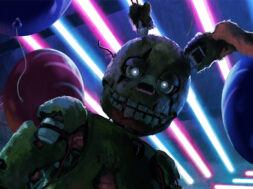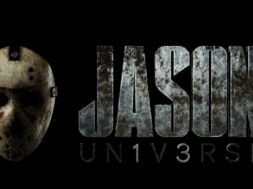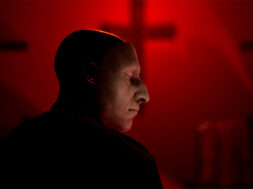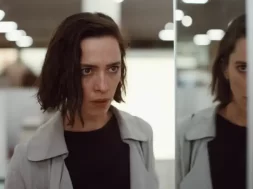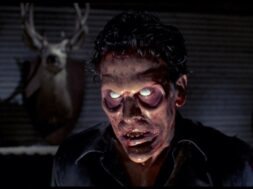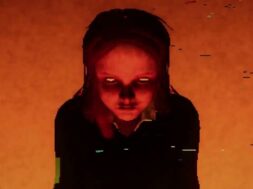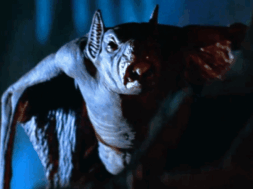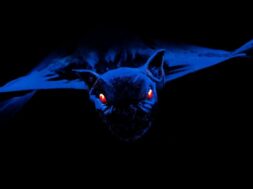With Paco Plaza’s Veronica taking Netflix by storm, and many touting it to be one of the most terrifying film in years, it’s time to highlight that Spain has been responsible for some of the scariest horror films for a while now.
When it comes to foreign horror the explosive wave of brutal films that emerged from France in the early 2000s, often referred to as New French Extremity, made the rest of the world take notice with films like Inside, High Tension, Martyrs, and so much more. The wave emerged as the boom of J-horror began to wane. Between the extreme visceral horror of the French, and the instantly iconic long-haired female ghosts of Asian horror, a very vital voice in worldwide horror had slipped by mostly unnoticed.
Spain has long been a master of horror, proving again and again that they can match the creeping supernatural frights and the vicious brutality of their brethren. But where Spanish horror truly excels is in the psychological. The permeating dread and unease combined with unexpected twists and turns makes Spanish horror some of the absolute best.
Though Spain had a horror boom that mirrored the U.S. in the ‘60s and ‘70s, and continued throughout the decades, it wasn’t until about 10 years ago that we started to really take heed. Spain has since emerged as a leader of horror, delivering some of the most terrifying films in recent memory and a new wave of talented filmmakers with an uncanny ability to craft scares. For the uninitiated in Spanish horror, here are 5 must-see films that serve as a great gateway:
Who Can Kill a Child? – Narciso Ibáñez Serrador

Or, ¿Quién puede matar a un niño?, Serrador’s 1976 killer kid movie manages to make his island of homicidal children genuinely creepy. British tourists Evelyn and Tom decide to take an island getaway vacation before Evelyn gives birth to their third child, but they quickly discover that their island of choice doesn’t seem to have any adults. The sense that something is truly off-kilter about the children gives way to a severe sense of unease, before the children become menacing in a way that few killer kid movies manage to achieve. Serrador favors psychological torment over gore, which makes the few moments of gore pack a punch. Before Children of the Corn, there was Serrador’s seminal shocker.
The Day of the Beast – Alex de la Iglesia

El Día de la Bestia is the perfect introduction to the dark, twisted humor of Alex de la Iglesia. A highly underappreciated Christmas horror film that follows a Catholic priest that teams up with a black metal enthusiast to try to stop the birth of the Antichrist, therefore the end of the world. How does the priest try to avert the birth? By committing as many sins as possible. Released in 1995, this horror comedy is a fast-paced thrill ride that’s as funny as it is horrific and offensive. If you enjoy this film, and you should, don’t stop there- de la Iglesia’s The Last Circus, Witching and Bitching, and The Bar all deliver on the director’s trademark horror and mean sense of humor.
Thesis – Alejandro Amenabar

Before scaring audiences stateside with ghostly shocker, The Others in 2004, Amenabar emerged as one the best Spanish directors of the ‘90s with psychological thriller Thesis. The plot revolves around Angela, a film student doing a thesis about violence, who discovers a snuff film of a girl being tortured to her death. The girl happened to be a former student at her school. It’s a masterful example of the psychological mysteries that reveal twist after twist that Spain does so well. A clever thriller that introspects on snuff and violence in media, while giving us characters you’re invested in and a killer that’s tough to predict. Taut with tension, it’s a fun thrill ride made even more impressive by it being Amenabar’s debut feature.
[REC] – Jaume Balaguero and Paco Plaza

Leave it to Spain and, more importantly, directors Paco Plaza and Jaume Balaguero to remind the world that found footage not only still had life left, but could deliver the most chilling narratives in horror history if handled with respect and innovation. [Rec] is the film that made the rest of the world sit up and pay attention to what Spain was doing in horror in 2007. After we slept with the lights on for weeks, that is. This found-footage nightmare, following television reporter Angela Vidal as she gets locked into an apartment building with something sinister, spawned 3 sequels and an American near shot-for-shot remake. A game changer in multiple ways, [Rec] was the film responsible for bringing Spain to the table. If you’re already quite familiar (and I have a hunch you are), then be sure to check out Balaguero’s chilling supernatural film Fragile and skin-crawling home invasion film Sleep Tight. And if you still haven’t seen Plaza’s Veronica, it’s on Netflix so there are no excuses. These two modern horror masters are clearly not slowing down.
The Orphanage – J.A. Bayona

Reminiscent of 1980’s cult classic haunter The Changeling, Bayona’s feature debut is as heartbreaking as it is frightening. The film’s profile may have been boosted by having Guillermo del Toro attached as executive producer, but Bayona helmed a master class of spine-tingling scares made more profound with a story of love among endearing characters. It, of course, helped that the story’s ghosts were children, particularly one with an affinity for creepy masks. Laura brings her family back to her childhood home, a former orphanage for handicapped children, and her son’s new invisible friend brings an ominous presence within the home. It’s no surprise that Hollywood snatched Bayona up after this film’s release; after breaking hearts in A Monster Calls, Bayona has promised to bring back the horror in Jurassic World: Fallen Kingdom.

